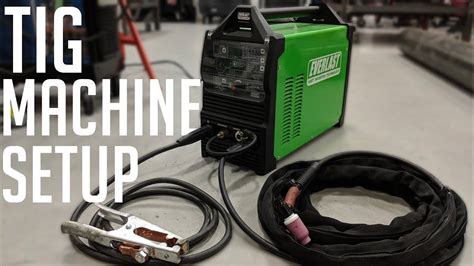Minimize TIG Welder Setup Expenses: A Comprehensive Guide
Setting up a TIG welding operation can be surprisingly expensive. From the welder itself to the necessary accessories and safety equipment, the initial investment can quickly add up. However, with careful planning and smart purchasing strategies, you can significantly minimize your setup expenses without sacrificing quality or safety. This guide explores practical strategies to optimize your budget and get your TIG welding operation up and running efficiently.
What are the Major Expenses Associated with TIG Welding Setup?
Before diving into cost-saving strategies, let's identify the primary expenses involved in setting up a TIG welding station:
- The TIG Welder: This is the most significant expense, with prices varying widely depending on features, amperage, and brand. Investing in a used, well-maintained welder can significantly reduce costs.
- Tungsten Electrodes: These need regular replacement, and the cost can accumulate over time. Opting for high-quality electrodes, though initially more expensive, can extend their lifespan and reduce long-term costs.
- Filler Metal: The type of filler metal you need will depend on your applications. Buying in bulk can often lead to significant savings.
- Gas Cylinder and Regulator: Argon or a mixture of argon and helium is crucial for TIG welding. Consider renting a gas cylinder initially to avoid a large upfront investment.
- Safety Equipment: This includes a welding helmet with appropriate shade, gloves, protective clothing, and potentially a fume extraction system. Investing in good quality safety equipment is non-negotiable, but you can find cost-effective options from reputable suppliers.
- Accessories: This includes various clamps, a foot pedal (for precise current control), a cleaning brush, and sharpening tools for tungsten electrodes. Prioritize essential accessories and gradually expand your collection as needed.
How Can I Reduce the Initial Investment in a TIG Welder?
1. Buying a Used TIG Welder:
This is often the most effective way to minimize initial costs. Thoroughly inspect any used welder before purchasing, paying close attention to its condition, maintenance history, and any potential issues.
2. Consider a Smaller, Less Powerful Welder:
If your welding needs are relatively light, a smaller, lower-amperage welder might suffice, significantly reducing the initial investment.
3. Explore Budget-Friendly Brands:
While top-tier brands offer superior performance, many reputable brands provide reliable TIG welders at more affordable prices. Research different brands and compare specifications to find the best value for your money.
What are Some Cost-Saving Strategies for Consumables?
1. Bulk Purchasing:
Buying tungsten electrodes and filler metal in bulk generally results in lower per-unit costs.
2. Proper Electrode Care:
Learning to sharpen and store tungsten electrodes correctly can significantly extend their lifespan and reduce replacement costs.
3. Optimize Welding Parameters:
Efficient welding techniques, including appropriate current settings and travel speed, can minimize filler metal usage and electrode consumption.
How Can I Minimize Expenses on Safety Equipment and Accessories?
1. Prioritize Essential Items:
Start with the absolute essentials (helmet, gloves, clothing) and gradually add other accessories as your needs and budget allow.
2. Search for Deals and Discounts:
Look for sales and discounts from welding supply retailers, both online and locally.
3. Consider Used Equipment (with Caution):
Used safety equipment should be thoroughly inspected for damage before use. Prioritize your safety and only use equipment in good working order.
Frequently Asked Questions
What is the cheapest way to get started with TIG welding?
The cheapest way to start is to buy a used, smaller capacity welder, and prioritize essential safety equipment and consumables. Consider renting a gas cylinder initially rather than purchasing one outright.
How much should I budget for setting up a TIG welding station?
The cost varies significantly depending on the welder's size and features, the quality of consumables and safety gear you choose, and whether you buy new or used equipment. A realistic budget could range from a few hundred to several thousand dollars.
What are the long-term cost considerations for TIG welding?
Long-term costs include ongoing expenses for consumables (tungsten electrodes, filler metal, gas), potential repairs or maintenance for your welder, and replacement of worn-out safety equipment. Proper maintenance and efficient welding techniques are crucial for minimizing these costs.
Are there any rental options for TIG welders?
Some welding supply stores may offer TIG welder rental options, especially for short-term projects. This can be a cost-effective alternative to purchasing a welder outright if your welding needs are infrequent.
By implementing these strategies, you can effectively minimize your TIG welder setup expenses without compromising safety or the quality of your work. Remember, thorough research, careful planning, and smart purchasing decisions are key to building a successful and cost-effective TIG welding operation.

